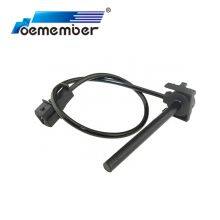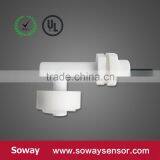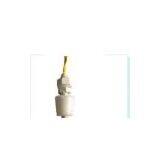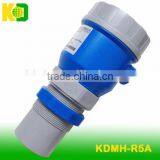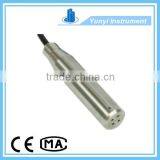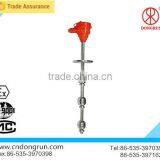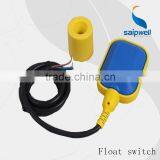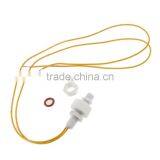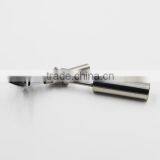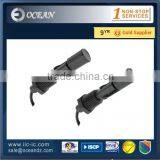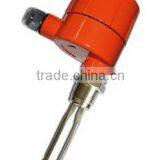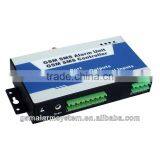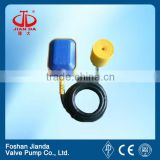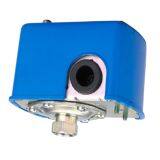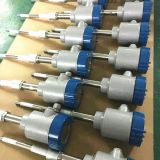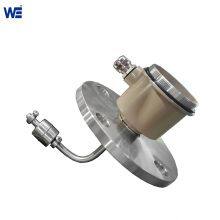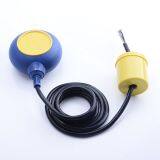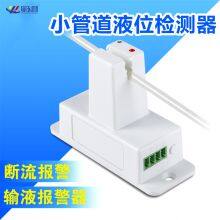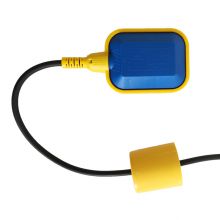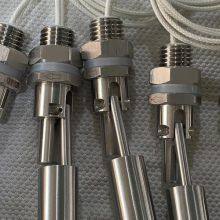Explore the new era of dependability and accuracy with our modern water level controllers. Whether you wish to increase the efficiency of your washing machine or any other appliance that demands accurate water level control, we have a solution tailored for you. Learn how our water level controllers can increase your machine's efficiency and give you peace of mind.
Water level sensors and controllers are essential for any precise liquid management system. They keep track of the liquid level in a tank or equipment and relay that information to the control unit. This in turn controls the water flow to keep the machine functioning at its best. The sensor itself is made in the form of a probe or a stainless steel float switch which detects the required liquid level and does the needful to maintain it.
A water level switch uses pressure or float mechanisms to detect changes in water levels. Once the water reaches a preset level, the switch activates or deactivates the pump or valve. This automated control eliminates chances of overflow, majorly helps in conserving water, and improves the efficiency of the machine. Ensuring a reliable level control gives your appliances the ability to function at optimal settings without fear of damage or breakdowns.
Any washing machine must have a level switch since it controls the water fill for each wash cycle. It also prevents over filling of water which can cause flooding and water damage. The switch helps maintain the efficiency of the wash cycle, ensuring optimal cleaning of clothes while conserving energy. This protects the appliance and decreases utility costs.
Every appliance requires a different water level switch model, so choose one that fits your device. Each appliance is equipped with installation instructions which you should follow precisely. Make sure that the switch is mounted appropriately, so it can detect water levels accurately. After everything is in place, check to ensure that all wires are connected and perform a system test to confirm everything functions as it should.
Ensuring the proper functionality of your water level sensor requires rigorous testing. Check the tank or appliance filled to different levels after installation. The switch should respond accordingly. During each water level, the sensor should engage the pump or valve. Routine testing enhances reliability and minimizes failures within the system.
Mistakes that are made during an installation can arise from poor mounting, wiring, and a lack of checking for leaks. The issues listed above can make the water level readings register inaccurately alongside system malfunctions. Make sure to avoid such mistakes by adhering to the installation instructions and ensuring all connections are secure. Performing regular maintenance and inspections will also help in eliminating long term issues.
Malfunctioning water level sensors can lead to problems with your appliances. Issues can arise from complete sensor failure, too, such as the switch providing incorrect readings. Within the scope of common household appliances, the most relevant issue with troubleshooting covers continuity checks, visual inspection for damage, and verifying the connections. Swift action towards these concerns goes a long way in preventing system backups.
Should a water level switch sustain irreparable damage, it may need to be replaced. Start from the faulty switch and trace its model number and specifications. Remove the old switch as per the manufacturer’s instructions and install the new one. The system's functionality may be fully restored after the damaged switch is removed and the new switch is deemed correctly installed.
Inconsistent water levels, failure to activate the pump, and even visible damage to the switch are all signs that a water level switch needs replacing. Malfunctions such as these will not only reduce the effectiveness of the appliance but might also lead to inefficient functioning of your device. Operating your system with inspections and timely water level switch replacements will suppress system damage while boosting efficiency.
We have various water level switches for household and industrial use. Our products are classified by their design and functionality, as well as how they integrate with different systems. Check our best sellers and get the switch that perfectly conforms to your needs.
Our water level management solutions improve the efficiency and longevity of your water-powered equipment. Specific to each machine, our switches control water levels with precision, which minimizes water waste, improves functionality, and prevents damage. With us, you always get the highest quality appliances and thus a guarantee of savings and reliability without worries.
A: Water level switches are used to indicate liquid levels, mostly water in tanks, containers, or machines. They work by signaling a controller which then enables and disables electrical pumps or motors proportional to the water level.
A: A washer also uses water level switches to check for the water level in the washer during filling cycles. Compatibility is crucial since it depends on the brand and model of the washer.
A: A water level switch may be mounted inside a tank through several ways like screwing it through an opening or attaching it to the tank's side. These methods depend on the construction of the water level switch and the tank itself. Installation simplicity is something that a lot of manufacturers emphasize.
A: Before attempting to attach a water level switch that connects via a plug, ensure that all power sources are disconnected. Following the instructions for your specific device, make sure to align the plug to the correct socket on the device. Always confirm that the hose or cable length is appropriate and optimal for your installation’s configuration.
A: Certain switches can be submerged or used underwater. Such devices will always be marked accordingly. Melt pressure, temperature, and other factors require checking the manufacturer’s specifications for the used application.
A: A water level switch triggers an alarm by sending a signal when water reaches a specified level in the tank, then either increasing or decreasing fills the tank further. The alarm system can be configured in such a way that receiving these signals prompts the alarm.


